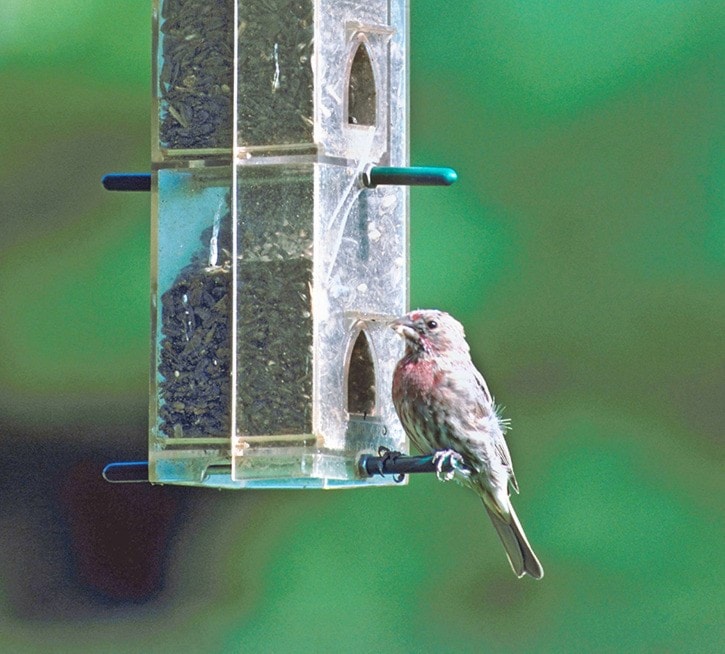Fall is a dangerous time for songbirds.
Heading south to escape the approaching winter, many fly at night and use daylight hours for feeding and resting.
When stormy, wet weather disrupts their journey, hungry birds descend like a gaggle of tourists. Unfamiliar with their immediate surroundings, eagerly looking for berries and insects on which to feed, they form noisy, fluttering, excited groups, easily distracted by a passing hawk or a bounding dog.
Landing on bird feeders, fruit trees and lawns, they are prone to fly up suddenly, making window collisions a frequent occurrence at this time of year. Window alignment or the reflection of sky and trees may mislead birds into seeing an escape route.
Thrushes, sparrows, warblers and flickers (a large woodpecker) are often the victims of collisions. The beautiful varied thrush, with its high-pitched, eerie whistle and love of dark forests, is seemingly unable to distinguish panes of glass.
 A cat on the loose can also be a huge danger to migrating birds.
A cat on the loose can also be a huge danger to migrating birds.
Hunting is in a cat’s genes, so it has a natural interest in birds and small mammals.
Chickadees, nuthatches and juncos are at risk when lively cats grab them off a low-hanging branch or feeder. Whole families of chickadees can perish with one enthusiastic cat on the prowl.
Song sparrows and wrens feeding on the ground are particularly easy prey. A new study by Environment Canada reveals that a whopping 196 million birds are killed in Canada by domestic and feral cats. A further 25 million die in window collisions.
These are significant and avoidable contributions to bird-population declines.
We can take action to reduce this upsettingly high death rate. Bird feeders should be placed either at a distance or very close to house windows, so that a startled bird does not fly up and into glass.
Transparent, ultraviolet, leaf-shape decals, sold at wild bird stores, make windows more visible to birds, which can see UV light.
The transparent decals have been shown to be much more effective than the old-style, hawk-shaped, black ones, and are almost invisible from indoors.
They need replacing every couple of the years, but are a relatively cheap investment.
An option for new construction is bird-friendly glass, notably “Ornilux”, designed by the Audubon Society and Max Planck Institute for Ornithology in Germany. It is already in use in the Lower Mainland, at the concession building at Centennial Beach in Boundary Bay Regional Park, just north of Point Roberts.
To prevent bird kills by cats, some owners have switched, without problems, to keeping their pets indoors.
A fully-netted, accessible outdoor area is an option for others.
Where cats roam free, bird feeders should be hung out of reach of a leaping cat or else removed completely.
Such solutions are needed to maintain a bird-friendly neighbourhood and put an end to songbird declines.
Anne Murray, the author of two nature books available in local book stores, writes monthly in the Peace Arch News – www.natureguidesbc.com
